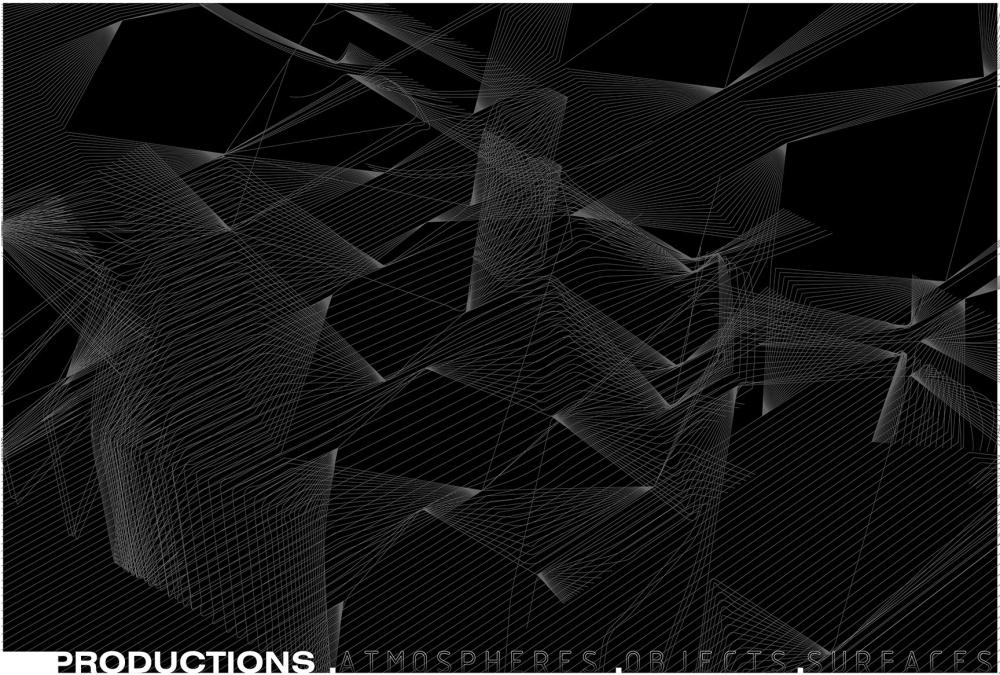PRODUCTIONS: ATMOSPHERES. OBJECTS. SURFACES.

The University of Texas at Austin School of Architecture is pleased to present the exhibition PRODUCTIONS: ATMOSPHERES. OBJECTS. SURFACES. The exhibition, curated and designed by Assistant Professor Clay Odom, explores concepts related to the generation of spatial, atmospheric and material effects through the exhibition of exciting, recent projects from a range of contemporary, speculative practices including: Baumgartner+Uriu, Gelpi Projects, Michael Hansmeyer, Andres Jaque/Office for Political Innovation, Jorge Ayala/[AY]architecture, LEONG-LEONG, Atelier Manferdini, Mark Foster Gage Architects, murmur/Heather Roberge, Catie Newell + Wes McGee, Numen/For Use, Oyler-Wu, Path, Rael San Fratello, Philippe Rahm Architectes, SelgasCano, ISSSStudio, Softlab, and The Very Many.
The exhibition, PRODUCTIONS: Atmospheres. Objects. Surfaces. explores methods, theories, and manifestations of a contemporary and evolving focus on effects as both by-products and generators of formal, material and spatial conditions. The exhibition addresses questions of contemporary theory and process primarily through the display of realized work. The exhibition highlights investigations and projects that are seen as defining PRODUCTIONS as both process and outcome, and EFFECTS as both generated and generating conditions. Particularly projects and practices associated with the interior interventions – exploring effective conditions produced within the context of interior design/interior architecture, architecture and installation art practices – are explored.
When the word “production” is used, one’s imagination moves almost immediately to fields of art, film, and theater. These fields are important for two primary reasons: their speed relative to forms of interior design and architecture, and their focus on experience and effects. The types of work they generate are focused on generating new conditions which might best be described as temporal, atmospheric or ephemeral, but that many critics might pejoratively characterize – most likely since the publication of Adolf Loos’ ‘Ornament and Crime’ and the advent of The Modern Movement, but certainly since World War II and the International Style in Architecture – using terms such as ‘superficial’, ‘ornamental’, ‘fake’ and ‘scenographic’. Today emerging spatial practices often focus explorations on the production of subjective or experiential effects through rigorous engagement with theory, processes, methods, material-form, and yes, practical application. Certainly the term ‘delight’ - one translation of Vitriuvius‘ ‘venustas’ - was part of the understanding of the role of design and architecture from it‘s earliest days and can be seen as returning to a foundational role for many of these contemporary practices.
As Gernot Bohme stated in his seminal work, “Atmosphere can only become a concept…accounting for the particular intermediary status of atmospheres between subject and object.” This intermediary status can be described as the territory where complex entanglement of effects, material, experience, and the contextual conditions which are engaged and generated through design. These entanglements are primarily associated with interior space, and by extension, a re-emerging contemporary strain of interior design, architecture, and art considering the implications of form and surface as generators of these types of spatial, contextual, and experiential effects. To go further, terms such as ‘atmosphere’, ‘subjectivity’, ‘decoration’ and ‘sublimity’ not only are being embraced through the design of material interventions, but they also begin to allow work to link and be positioned within larger- and longer- historical trends in the realm of interior design and spatial practice. The work being produced by the offices represented here engages these questions with rigor, exploring the possibilities of our contemporary age to re-engage with notions of space and atmosphere, the generation of objects and the manipulation of surfaces not only to further contemporary design discourse but to engage and enhance contemporary life with optimism and vitality.
Finally, the work exhibited explores the tension and interaction between the objective and subjective and allows us to engage in transforming and leveraging Buckminster Fuller’s notion of environmentalism - described through aphorisms such as ‘how much does your building weigh?’ - into a contemporary provocation, ‘what does your process produce?’ This may be seen as new environment-alism focused primarily on entangling material-form-surface-space and experience. Ultimately, the work exhibited and collected in PRODUCTIONS: Atmospheres. Objects. Surfaces. exhibits capacities to move fluidly between conceptual theories, material processes, formal/spatial/experiential outcomes, and potentiality space - as the primary medium of human interaction - to both address and "…negotiate a field in which the actual and the virtual assume ever more complex configurations…"

